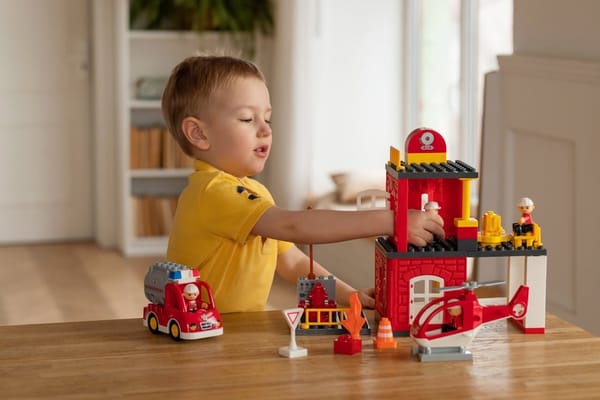The Homeschool Mom’s Ultimate Planner Guide for 2025: 13 Essential Tools to Stay Organized and Inspired

Homeschooling moms know that planning is the backbone of a smooth homeschool year. The right resources in your homeschool planner can lighten your mental load, keep your household running efficiently, and help your kids thrive academically and beyond.
To help you make 2025 your most organized and successful homeschooling year yet, here’s a guide to 13 essential resources for your homeschool planner. These ideas go beyond checklists and include trackers, seasonal bucket lists, reminders, and creative tools to simplify your homeschool life.
1. Important Dates
Start your planner by listing out all the important dates for 2025, ensuring nothing gets overlooked.
What to Include:
• Start and end dates for your homeschool year.
• Holidays, birthdays, and anniversaries.
• Extracurricular events, field trips, and competitions.
• Standardized testing deadlines (if applicable).
• Appointment reminders for doctors, dentists, vision check-ups, and more.
Pro Tip: Use color-coding to separate family events from homeschooling milestones for easy reference.

2. Homeschool Schedule
Your homeschool schedule is a cornerstone of planning. Keep it flexible yet structured to meet your family’s needs.
What to Include:
• Daily routines, including subjects and breaks.
• Weekly plans for extracurricular activities or co-op classes.
• Seasonal shifts (e.g., shorter school days in summer).
Pro Tip: Leave room for adjustments; homeschool schedules often need tweaking as life happens.

3. Supply Inventory (Don’t Forget Snacks!)
Avoid last-minute runs to the store by tracking all your homeschooling supplies, including those all-important snacks! Make a note of what is running low and pick it up on your next pick-up order or trip to the store.
What to Track:
• Art Supplies: Crayons, glue, scissors, construction paper.
• Office Materials: Notebooks, whiteboard markers, printer paper.
• Science Tools: Magnifying glasses, measuring cups, pipettes.
• Snacks: Keep healthy, easy-to-grab options on hand, like granola bars, popcorn, or veggie sticks.
Pro Tip: Check your inventory monthly and replenish as needed. A well-stocked homeschool setup keeps the day running smoothly.
4. Chores and Responsibilities Tracker
Homeschooling is a family effort, and assigning chores teaches responsibility and teamwork.
What to Include:
• Age-appropriate chores for each child.
• A daily or weekly rotation for tasks like dishwashing, tidying up, or pet care.
• Accountability check-ins to track completed tasks.
Pro Tip: Incorporate chores into your life skills curriculum, such as budgeting grocery trips or maintaining a garden.

5. Seasonal Bucket Lists
Make homeschooling more memorable with seasonal bucket lists full of fun, educational activities.
Seasonal Ideas:
• Winter: Make snowflakes from paper, watch a winter-themed documentary, or bake cookies.
• Spring: Plant a garden, visit a local farm, or explore nature trails.
• Summer: Go on a camping trip, explore tide pools, or attend a historical reenactment.
• Fall: Visit a pumpkin patch, collect and identify leaves, or create a fall-themed art project.
Pro Tip: Post your bucket lists on the fridge or a family bulletin board to keep everyone excited about upcoming adventures.

6. Documentaries to Watch
Curate a list of documentaries that align with your curriculum and family interests.
Pro Tip: Schedule documentary nights for family bonding and encourage your kids to journal about what they learn.
7. Project Ideas List
Keep a running list of project ideas to spark creativity and exploration.
Examples:
• Create a family tree for history.
• Build a model volcano for science.
• Start a small business to teach entrepreneurship.
• Write and illustrate a family storybook.
Pro Tip: Tie projects to seasonal themes or upcoming holidays for added excitement and relevance.
8. Goals and Achievements Tracker
Celebrate progress by keeping track of goals for your students and yourself. Track the wins and achievements for your homeschool journey.
Ideas for Goals:
• Academic milestones like mastering multiplication or completing a book report.
• Life skills such as cooking, sewing, or budgeting.
• Personal growth goals like kindness, patience, or leadership.
Pro Tip: Reward accomplishments with certificates, stickers, or a special outing.

9. Read-Aloud List
Foster a love of literature by keeping a list of books to read aloud as a family.
Ideas to Include:
• Classics like Charlotte’s Web by E.B. White.
• Adventure stories like The Chronicles of Narnia by C.S. Lewis.
• Non-fiction read-alouds like The Story of the World by Susan Wise Bauer.
• Themed books that align with holidays or seasons.
Pro Tip: Dedicate time each day or week for family reading sessions, and don’t shy away from adding fun voices for characters!

10. Skills to Learn
Plan practical life skills to teach your children alongside academics.
Skill Ideas:
• Younger Kids: Tying shoelaces, setting the table, organizing toys.
• Middle Schoolers: Cooking simple meals, managing allowance, basic first aid.
• High Schoolers: Budgeting, job interview skills, and car maintenance.
Pro Tip: Incorporate these skills naturally into daily life or turn them into fun challenges.

11. Vacations and Field Trips Planner
Make room in your planner for both big vacations and smaller, local field trips.
What to Track:
• Budget and savings goals for major trips.
• Packing lists and travel checklists.
• Tickets, reservations, and itineraries.
Field Trip Ideas:
• Museums, zoos, or aquariums.
• Nature hikes or science centers.
• Historical landmarks.
Pro Tip: Plan trips around subjects your kids are studying to reinforce their learning in real-world contexts.
12. Monthly Review and Reflection
At the end of each month, take time to evaluate how things are going and plan for the month ahead.
Reflection Prompts:
• What went well this month?
• What challenges did we face, and how can we improve?
• What were our favorite moments?
Pro Tip: Keep these reflections in a dedicated section of your planner to look back on as the year progresses.

13. Transfer Key Information from Last Year’s Planner
Before diving into your new year, don’t forget to reference your 2024 planner for valuable information you’ll need moving forward. Transferring key details into your 2025 planner can save time and ensure a seamless transition.
What to Transfer:
• Contacts: Co-op leaders, tutors, extracurricular coaches, or homeschool support groups.
• Passwords: Login credentials for curriculum websites, educational apps, and online classes.
• Important Notes: Insights from the previous year, such as strategies that worked, challenges to revisit, or ongoing projects.
• Reference Materials: Class schedules, curriculum summaries, or evaluation results you want to build on in 2025.
Pro Tip: Dedicate a “Reference Section” in your new planner for this information. Keeping it all in one place ensures that nothing important gets overlooked as you start the new year.
Conclusion:
With these 13 essential resources in your homeschool planner, you’ll be equipped to manage your homeschool and family life with confidence and ease. Whether it’s keeping an eye on important dates, celebrating accomplishments, or planning fun adventures, these ideas are designed to help you create a balanced and joyful homeschooling year.
What are your favorite planner must-haves? Share in the comments below!


